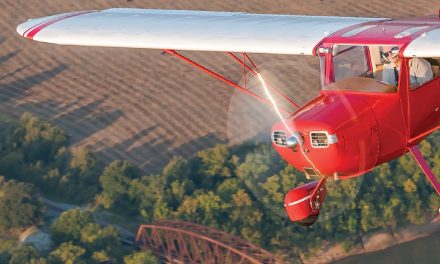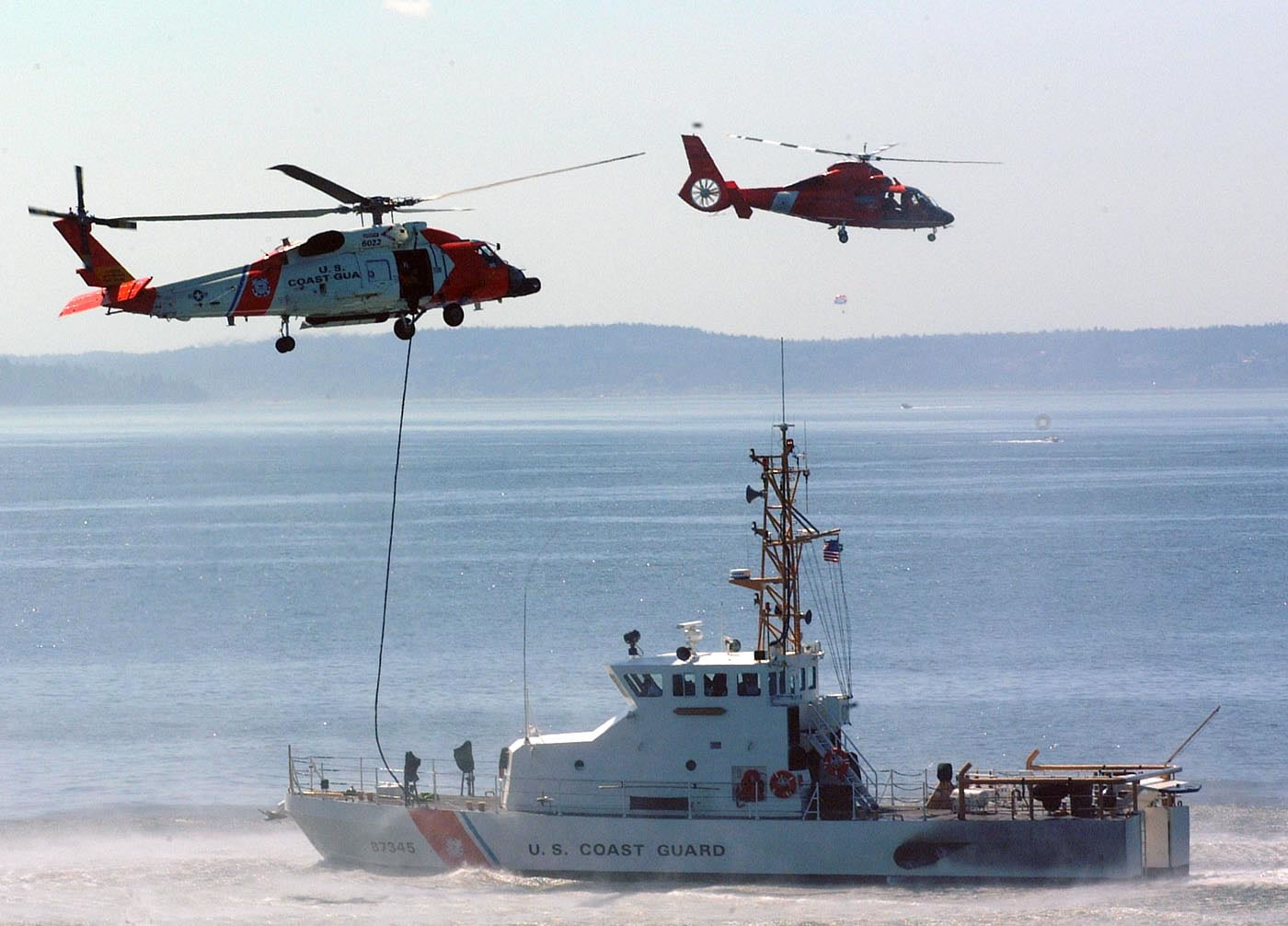VFR flying can be more difficult than you might imagine. Investigators study accident statistics with reports of highly qualified pilots getting themselves into unfathomable situations, usually as a result of a tragic comedy of errors.
Accordingly, I’ve put together a series of suggestions that cover a variety of problems and situations. There are only 20 listed below, but one could add another 50 or so without breaking a sweat. Some of these don’t relate to emergencies; they’re associated with common-sense procedures to make VFR flying easier, safer, and more fun.
- Despite the near-universal adoption of GPS for en route navigation, resist the temptation to simply dial up the identifier of your destination and fly direct. Consider instead putting together a flight plan that includes slight deviations to stay near highways, airports, or flat terrain. You’d be amazed how far you can deviate from a great circle route without adding significantly to total distance.
- Think twice about cruise altitude. On short trips, the tendency is often to level at 4,000-7,000 AGL. Higher is nearly always better for several reasons. Fuel burn is less, the airplane may actually be faster up high and range will be extended. Most general aviation airplanes can reach 8,000-10,000 feet in only five to seven minutes more, and they’ll be above much of the other traffic, benefit from longer radio range, usually operate above the convection layer in smoother air, and have a larger pad of sky beneath them in the event of a problem.
- While it’s true you don’t always have to fill the tanks, and tankering six hours of fuel for a one-hour flight is excessive — you have to burn fuel to carry fuel — remember the catchphrase of many fighter pilots: The only time you can have too much fuel on board is when you’re on fire. You may never know what circumstances will dictate the need for more fuel, but if you don’t have any extra, it won’t matter. It’s nearly always a good idea to carry as much fuel as practical, cabin payload and CG permitting of course.
- Make it a point to clean at least the windshield and front side windows every time you fly. Well-known author and humorist Rod Machado does that religiously and if it’s good enough for Rod, it’s good enough for me. I’ve had too many instances of spotting another aircraft coming right at me only to discover it’s a bug spot with the light hitting at exactly the correct angle.
- Get in the habit of minimizing extra weight by storing it in your locker or hangar. Obviously, this applies equally to VFR and IFR flying. Extra weight slows you down. You might be surprised at the amount of useless junk you’re carrying around for no good reason. I did a little housekeeping to my airplane a few months ago, and managed to find 50 pounds of miscellaneous stuff that I’d been too lazy to offload; extra oil, extra tool kits, extra tiedown kits, charts for most of the Western Hemisphere, kneeboards, enough pens to write War and Peace, four sets of chocks (metal, wood, composite, and unidentified), several IFR hoods, a couple of outdated show programs for EAA AirVenture Oshkosh, five life preservers (for a four-seat airplane), three cans of wax, two backup portable GPSs — you get the idea. Also, store whatever you do carry aboard as far aft in the airplane as convenient. The farther aft the CG (obviously inside the envelope), the faster you’ll cruise.
- When you’re through using an air vent, remember to close it. Most general aviation airplanes don’t have air conditioning so many of us open the air vents in hot weather and forget to close them until winter. That introduces what aeronautical engineers call parasite drag just as surely as opening a window and sticking your hand in the wind. Even if the actual vent doesn’t disrupt the airflow, the disturbed air associated with the vent will add drag.
- It’s good sense to use flight following whenever you can, especially around heavily congested airspace. The FF controller usually has some very sophisticated radar at his or her disposal, very likely more exotic than the TIS/TCAS you have on your panel (if you’re that lucky). Flight following can be especially valuable if your trip is long, over water, or over remote terrain. If you have a problem, you won’t need to scramble to find the proper frequency. (Out in the boonies, I keep one radio set on 121.5 MHz anyway in case I or someone else needs help.) A flight following controller can also help keep you clear of restricted or prohibited zones and advise when they’re “hot.” Also, each subsequent controller will automatically update the altimeter setting with every handoff.
- Route around big cities whenever possible. Traffic is usually lighter; smog isn’t as much of a problem; fuel, ramp and parking prices generally are lower in the boonies; and you’re less likely to receive vectors away from your course line or have altitude restrictions to deal with.
- Be smart about descents and don’t automatically start down at 500 fpm (as I did for years). In winter, you may want to stay high as long as possible to maximize the effects of tailwinds. Similarly, hot surface temps in summer may dictate the same technique to avoid the heat and convective turbulence down low. If there are gathering clouds ahead, you may want to descend early to make certain you don’t get trapped on top.
- Don’t be paranoid about turbulence. You don’t need to reduce to maneuvering speed for every little bump in the sky. I flew with a G-meter in my first airplane — only because I had an open hole in the panel and needed to fill it with something cheap — and I was amazed to discover that I almost never encountered an “air pocket” (as the media likes to call them) stronger than 1.5-2g. If you’re uncomfortable, do whatever’s necessary, but don’t assume the airplane will start coming apart every time you fly through a section of cobblestone sky.
- Think ahead for cross-country trips. Take along updated charts, food, water, pilot relief bags, a big watch, an extra pair of Ray-Bans, and survival gear as necessary. Don’t forget life vests if you’re flying over large expanses of water. Everyone knows you need vests for ocean crossings, but the Great Lakes and even some rivers can also demand a vest and sometimes a raft. If you’re flying in remote areas, consider including a survival weapon. I carry a .22 rifle/20-gauge shotgun over and under. Yes, I’m aware there can be legal implications to carrying a rifle in some states, but I’d rather have it and not need it than need it and not have it.
- Conversely, remember that water can be your best friend in some circumstances over landlocked trips. A friend was ferrying a new Mooney to Europe a few years back and suffered a total engine failure over the Swiss Alps. The terrain in every direction was near vertical so he picked out the biggest flat spot he could find, an alpine lake, and ditched the airplane rather than attempt a dead stick landing against the side of a mountain. The airplane got very wet, but he swam away uninjured.
- Temper your judgment about flying in high mountain terrain at all if you can avoid it. Yes, it’s beautiful, especially with popcorn cumulus floating by, but there may be little margin for error if you accidently enter a cloud. A while back, two good friends, both excellent IFR-rated pilots, flew a new Caravan straight into the side of a hill near Palm Springs, apparently another CFIT (controlled flight into terrain) accident. A 180-degree turn won’t necessarily solve your problem — it may make it worse if clouds have closed in behind you — but it’s a far safer bet than continuing without a clearance or any idea where the tall rocks live.
- If you fly with a panel-mounted GPS, as nearly everyone does these days, consider buying a portable backup. I carry two backups on most ferry flights. That way I have a tie breaker in case they disagree. Panel mounts typically have their own dedicated battery specifically designed to avoid losing position information following an electrical power failure, but depending upon your situation, that may not be enough. You can find some excellent, used Garmin portables for less than $500, a small investment for the extra security.
- Avoid flying at any limit speed. Vne is the obvious worst one but there are a dozen others. Vle, max landing gear extension speed, is often specified to save the gear doors. Violate it consistently, and those doors may eventually fail. It’s the same with flap extension speed, Vfe. If you use gear and flaps to decelerate, do so only well within the specified limit speeds.
- Even if you’re not IFR rated, consider carrying a set of Low Altitude Enroute charts for the trips you make most often. A Low Altitude chart can provide you with IFR minimum en route altitudes, an instant measure of safe altitude along established routes. You’ll also have an easy reference to leg distances between VORs and airports (sometimes). IFR charts also provide sector frequencies in case you need help and there’s no one awake on 121.5 MHz.
- Everyone knows you should scan the airspace around you for other traffic, but the most neglected quadrant of see-and-be-seen is directly behind you. Studies of midair collisions have shown that the most likely risk is from the rear. That’s especially true during descents when a following aircraft overruns preceding traffic. If you’re descending, try throwing in some slight turns occasionally and check your six for what might be gaining on you.
- Think at least three times about flying VFR at night — especially when there’s no moon. A few years back, the FAA considered requiring additional simulator hours for a night VFR endorsement. The idea didn’t fly, but there’s no question night flying is more demanding than day VFR. Horizons often vanish at night, clouds become invisible, and ground detail usually fades to black. Night can simulate a black hole, no place for a VFR pilot.
- Every pilot without an instrument rating fears the possibility of winding up on top of an overcast with little fuel, experience, or options. It can happen to anyone, especially aviators who think they’re doing everything right and accidentally allow the clouds to thicken and turn solid below them almost unnoticed. There’s a special risk over any body of water that can generate instant ground fog. The tendency is for pilots to watch the sky rather than the ground and barely notice when clouds creep in insidiously and blot out all VFR reference points. For that reason, keep an eye on the lower quadrant to ensure you’re not being seduced into a situation you’ll have trouble getting out of. Flight watch can give you a warning of the problem by providing temperature and dew point. If those two numbers are approaching each other, it may be time to look for someplace else to go.
- Finally, it’s probably the most common advice offered to new pilots, but don’t wait too long to ask for help. Whether you’re trapped above clouds, “temporarily disoriented,” or have some other problem, someone on the ground may be able to offer assistance. Many pilots assume any admission of shortcomings in their flight planning or decision-making will automatically result in a violation. That’s rarely the case. Many FAA employees are pilots themselves who’ve been there. If you do get into trouble, remember the four C’s of an emergency other than a loss of power: climb, communicate, confess, and comply. Climb for better radio reception. Communicate with someone on the ground who may be able to help. Confess the details of your situation. Comply with any directions. Remember that while this may be your first emergency, the person on the other end of the radio has likely dealt with the same problem a dozen or more times. He or she has access to information, equipment, and assets that you don’t.






